The history of women in whisky is as long as the history of whisky.
Not that you would know that from the way the story is so often told. Even when I was growing up, in the 90s and 00s, whisky was associated with men. For some, that’s still an automatic connection. I don’t know a woman in this industry who hasn’t been met with condescending surprise when they express their love for whisky.
Look at the advertisements, the stock images, each pop cultural reference. The suave gentleman. A maltman sweating over the mash tun. The patriarch by the fireplace. Beards. Cigars. Kilts. Dads. Grandads. Men.
Peel back all that and peer into the real story of whisky, and a more rounded picture appears. One with characters often hidden behind initials, marriage certificates, or family names. Women in whisky.
The role of women in drinks
Interestingly, scientific studies show women tend to have a slight edge in olfactory tasks. Large-scale meta-analysis found that women outperform men in identification (naming smells), discrimination (telling smells apart) and detection threshold (detecting faint odours). The distinction is perhaps narrower than some have claimed, but in a field where nuance is paramount, any edge in blending, tasting, and assessing aroma can make an impact.
Maybe past civilisations knew more than us. Across history, women haven’t just drunk alcohol; they’ve made it, sold it, and shaped its rituals. There have been cultures and societies where the creation and serving of alcohol was considered something best handled by women. The earliest brewers were women*.
From Mesopotamia to Medieval England, alewives brewed and sold beer from their homes or taverns. The Sumerian goddess of brewing, Ninkasi, even had a hymn dedicated to her that doubles as a recipe for beer. In the babushka samogon scene, Soviet-era grandmothers kept Russia’s spirit alive (literally) by distilling illicit samogon (moonshine) when state vodka ran dry. West African pito and burukutu brewers, Peruvian chicheras, Japanese sake onna tōji, Mexican mezcaleras, Scandinavian farmhouse brewers… all examples where women were at the core of drinks production.
The recent resurgence of women distillers, brewers, and blenders isn’t a revolution; it’s more of a homecoming.
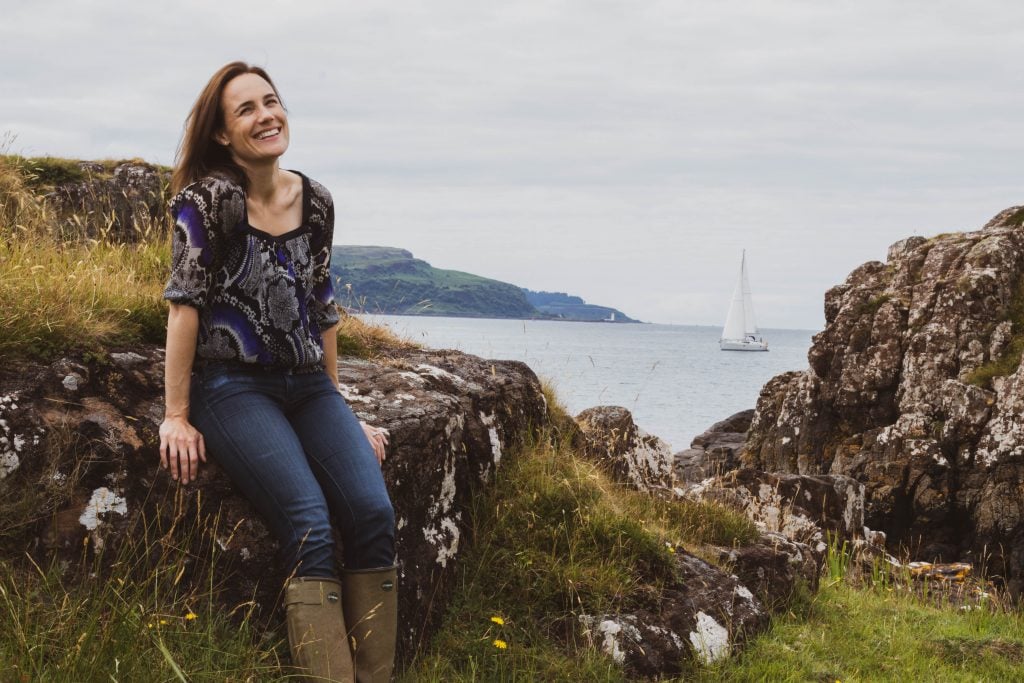
Let’s talk about women in whisky
Women in Whisky: Past and Present
In fact, if you go back to the early days of the whisky industry, the 17th century, you will find women were among the first whisky makers recorded in Scotland. One was Jonet Cochrane of Glasgow, who supplied the Rector of the University of Glasgow with generous quantities of Scotch whisky for “men employed on university business”. Her transactions weren’t illicit, but they weren’t exactly formal either. In this era, there was whisky being made in kitchens and farmhouses, often by women, and sold locally to supplement the family income.
Historian Iseabel Glen, researching the trade in Kintyre, found evidence that more than a fifth of the customers of Campbeltown coppersmith Robert Armour (who made and repaired stills in the early 1800s) were women. Gregor Adamson, in his history of the whisky industry on Arran, found many references to women making whisky on the island before the 1820s. Peggy Donaldson’s name is preserved in parish records, so we know she was a brewer at Glenshant Distillery on Arran in the 1790s.
Women worked together, sometimes as widows, sometimes as business partners, operating communal stills in small rural fermtouns. These weren’t hobbyists. They were producers, selling their barley spirit to smugglers and dealers who distributed it across Scotland’s growing cities. Whisky, for them, was survival and self-sufficiency. For some, it was even agency. Like it was for the alewives, the burukutu brewers…
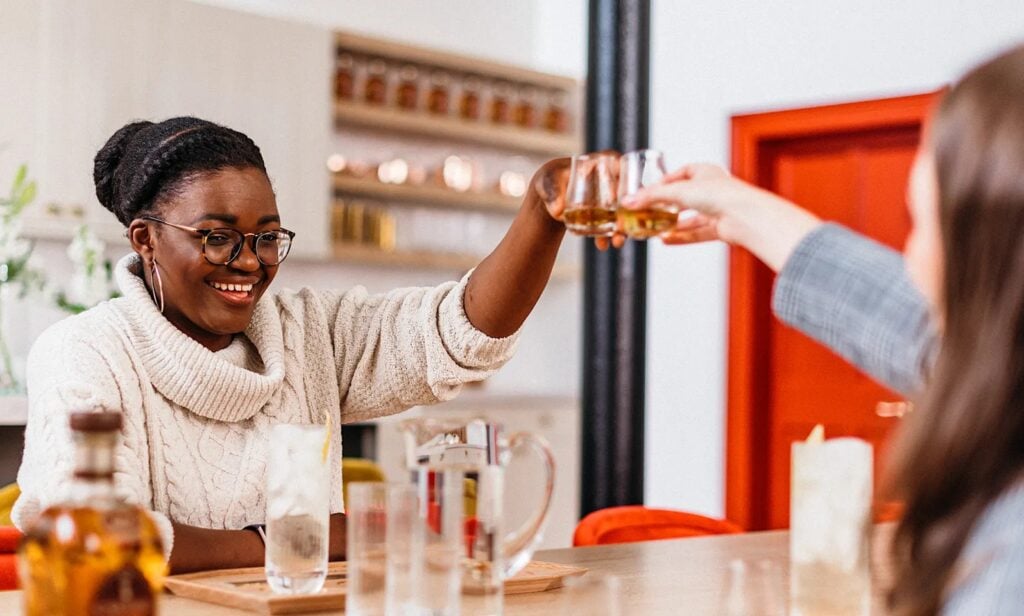
Women have always played a part in whisky
The erasure
Then came the erasure. As distilling professionalised, women were quietly pushed out. It’s a scene you’ll recognise if you’ve ever read about the repression of factory women in post-war Britain, or the footballers banned from the pitch once men returned from the front.
When the British government introduced the Excise Acts of 1822 and 1823, enforcing new licences and higher costs, small-scale makers were crushed. The domestic craft became an industrial business, and men wrote the rules.
From there, the public face of whisky became overwhelmingly male. Yet women didn’t vanish; they just moved behind the scenes. They would often hold secretarial and junior clerical positions or work in bottling halls in towns and cities across the country. The industry they had helped to build was still running on their labour; it just stopped naming them. But you can’t keep pioneers down forever.
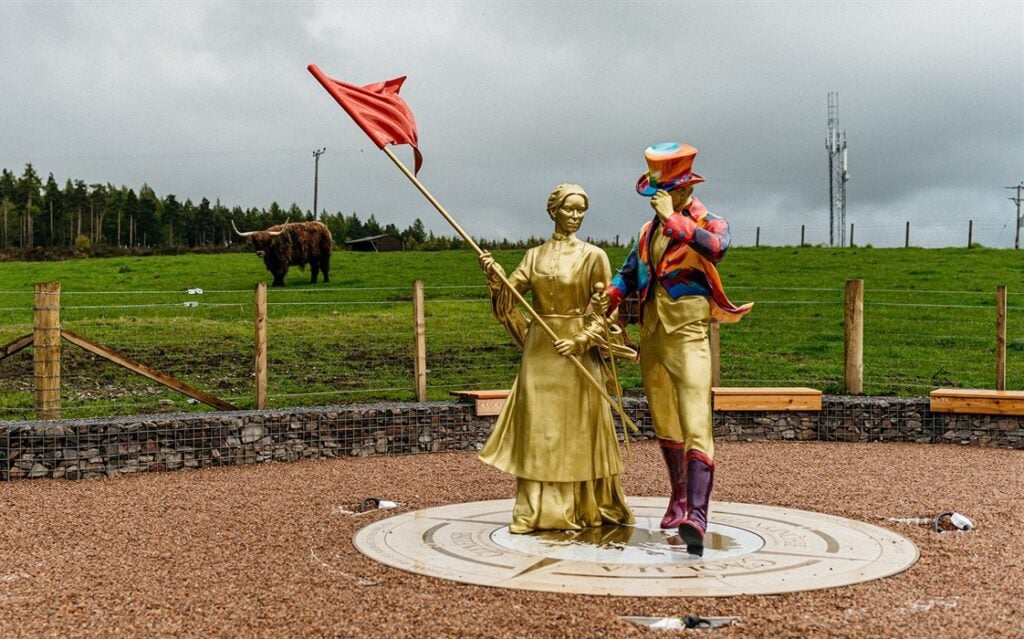
Helen Cumming, raising the famous red flag
Beyond the red flags
Even through the 19th century, women were quietly running distilleries, often widows holding the line when their husbands died. Jane McGregor ran Littlemill, Elizabeth Conacher managed Blair Athol, Elizabeth Phillips oversaw Glenturret, and Marion McFarlane of M. McFarlane & Co. held the reins at Port Dundas in Glasgow. Their names appear on contracts and deeds that prove they weren’t just placeholders.
Some faced steeper climbs. Margaret Sutherland, the widow of Dalmore’s owner, Donald Sutherland, tried to take over the distillery in the mid-1800s. Her father and brother took control “on her behalf”, drove it into bankruptcy, and left her ruined. Her story, told by whisky historian Fred Minnick in Whiskey Women (2013), shows how women’s leadership was often undermined by the systems around them.
Yet in pockets of Scotland, women continued to shape whisky’s future. On Speyside, Helen Cumming began distilling illicitly in 1811, raising a red flag to warn neighbours when excise officers were near. She and her husband John, went on to found Cardhu, and her daughter-in-law, Elizabeth Cumming later expanded it into a modern, legal distillery. By 1884, Elizabeth had built a new site and struck a deal to sell the old one to John Walker & Sons, helping to propel Johnnie Walker into global renown.
Nick Morgan’s research for A Long Stride: The Story of the World’s No.1 Scotch Whisky (2020) adds another forgotten name: Elizabeth Walker, wife of the original John Walker. She played a major role in running the family grocer’s business after her husband’s death, influencing branding, decision-making, and even blending alongside her son, Alexander. Her fingerprints are on the birth of Johnnie Walker itself; she just never got the label credit.
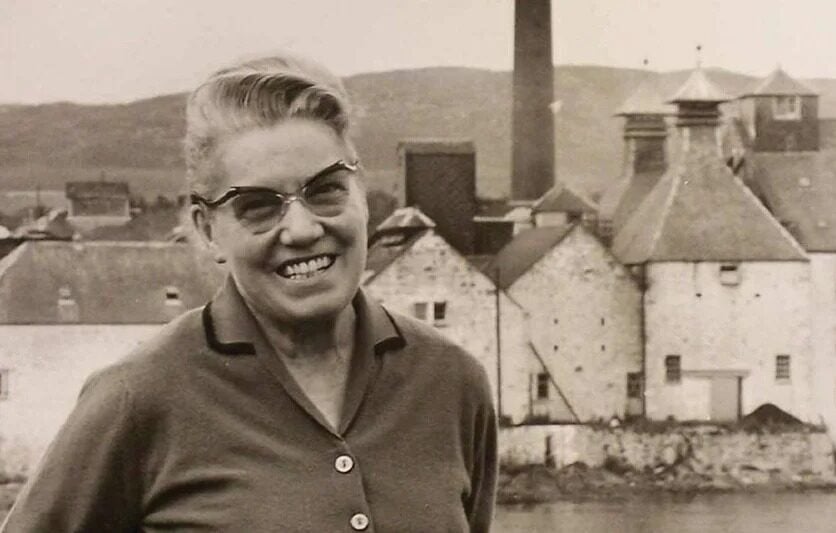
The famous Bessie Williamson, in front of the Laphroaig Distillery
Elizabeth “Bessie” Williamson: the backbone of Laphroaig
Into the 20th century, women’s visible presence in whisky dwindled to near invisibility, but a few exceptional figures did break through.
Among them was Elizabeth “Bessie” Williamson. She joined the Laphroaig in 1934 as a summer typist and ended up running it for decades. When owner Ian Hunter suffered a stroke, Williamson took over operations, guiding the Islay distillery through wartime production when the government repurposed it for military use. She safeguarded workers from conscription, signed off on ammunition shipments stored in the malt barns, and later became one of the first to champion single malts in the American market.
Williamson was also the first and only woman to own and manage a Scotch distillery in the 20th century. Her leadership transformed Laphroaig from a local producer into an international name. In 1963, she was appointed to the Most Venerable Order of St John of Jerusalem for her service to her community, the woman who kept Islay’s spirit alive through war and beyond.
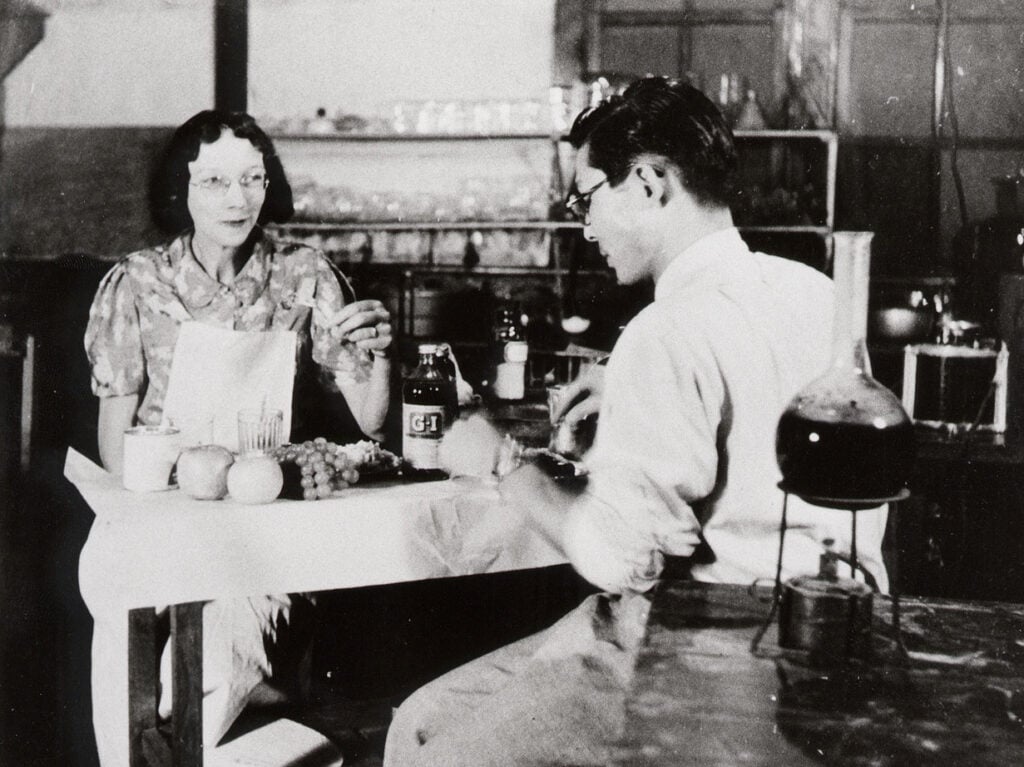
Masataka Taketsuru and Rita Cowan in a blending lab
Rita Cowan: the heart of Japanese whisky
While Bessie was holding Islay together, another Scotswoman was laying the foundations for Japanese whisky. Rita Cowan, a doctor’s daughter from Kirkintilloch, met Masataka Taketsuru, a young Japanese chemist studying distillation in Glasgow, in 1919. They married, which meant Taketsuru could have stayed in Scotland. But Cowan reminded him of his dream: to make whisky in Japan. So, off they went. The genesis of Japanese whisky owes everything to this headstrong, independent woman, and arguably whisky’s greatest love story.
The two moved to Japan, Taketsuru working for Suntory creating the first Japanese whisky, then leaving to found the Yoichi Distillery (now Nikka) in 1934. Some of the funding came from investors from Osaka, whose children had been taught English or piano by Cowan. Dave Broom, in his book The Japanese Way of Whisky (2025), even suggests the distillery’s location was influenced by the couple’s happy days in Campeltown.
During the Second World War, Cowan endured isolation and raids by the Kempeitai, accused of being a Western spy, but she stayed. She opened a nursery for orphans of the conflict, and today, the main street in Yoichi is called Rita Road in her memory. Those at the distillery believe Cowan and Taketsuru continue to watch over them today.
Making a mark, slowly but surely
Across the Atlantic, Margie Samuels was rewriting bourbon’s playbook. Her husband, Bill Samuels Sr., is often spoken of as the pioneering founder of Maker’s Mark in the 1950s. But it was her ideas that defined the brand: the bottle’s distinctive shape, the script-style label, and that iconic red wax seal. It was also her kitchen experiment — baking bread with different grain recipes — that inspired Maker’s Mark’s soft red winter wheat mashbill. In 2014, Samuels became the first woman inducted into the Kentucky Bourbon Hall of Fame.
In Scotland, change came slowly but surely. By the 1970s, women began entering the whisky industry through science rather than family ties. Maureen Robinson, a pharmacist by training, joined Distillers Company Ltd in 1977, followed by Caroline Martin in 1986 and Rosemarie Cassidy in 1988. They worked in sensory analysis, pioneering the scientific side of blending. Around the same time, Sheila Burtles co-created the first Scotch flavour wheel with Jim Swan at Pentlands Scotch Whisky Research, which revolutionised how flavour is described.
Another name worth remembering is Ethel Greig Robertson, who in 1961 co-founded The Edrington Group, now one of the largest Scotch whisky companies in the world, owning The Macallan, Highland Park, and The Famous Grouse. Her leadership ensured the company’s independence and Scottish ownership through turbulent decades.
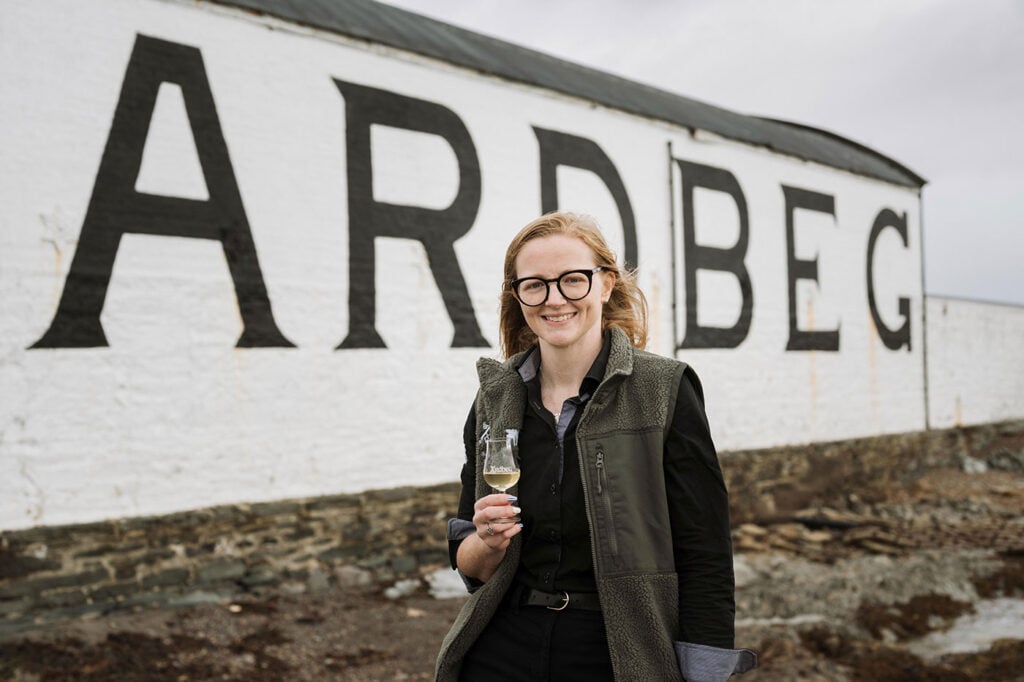
Say hello to Bryony McNiven. Photo by Ben Shakespeare
Women in whisky today
By the 1990s, the balance was beginning to shift. Rachel Barrie became Scotch’s first female master blender, bringing her sensory background from the Scotch Whisky Research Institute into blending at Macdonald & Muir (now Glenmorangie). She later moved to Benriach, Glendronach, and Glenglassaugh, where her work has earned industry-wide respect.
Today, women are at the very centre of whisky’s evolution. Stephanie Macleod, master blender at Dewar’s, has been named Master Blender of the Year by the International Whisky Competition (IWC) for a sensational six years in a row, following victory at last year’s awards. Emma Walker leads blending at Johnnie Walker, overseeing one of the world’s most complex whisky portfolios. Bryony McNiven made history as Ardbeg’s first woman distillery manager in nearly two centuries, since the MacDougall sisters first ran it. Alice Pearson, the 25-year-old head of production at English whisky distillery The Cotswolds, is one of the industry’s rising stars.
Founders include Claire Vaughan at White Peak Distillery, Louise McGuane at J.J. Corry, Desiree Reid at Cardrona Distillery and Annabel Thomas, founder and CEO of Nc’nean. The latter is actively creating space for women to enter whisky through internships and mentorship.
Taking on the culture
As is Becky Paskin. The former Spirits Business and Scotchwhisky.com editor made headlines by taking the industry’s culture head-on. In 2020, she challenged the sexism of whisky writing, specifically the work of Jim Murray.
Not content to stand still, Paskin co-founded the OurWhisky Foundation**, which supports and celebrates women in the field. While many are happy to talk the talk, the foundation is making real, tangible differences. Research found men appear 228% more often than women in brand imagery, so OurWhisky created the Modern Face of Whisky photo library. Those who want to address the imbalance now have a resource. The recently published report — Do You Even Like Whisky? — is an asset for brands trying to understand gender representation properly.
Elsewhere, just this month, Kristiane Westray’s first book Savour (2025), was published. The book is an open invitation to explore flavour and fun in whisky without gatekeeping or gendered nonsense. Alongside her SafeSpace whisky project, Wrestwray is helping to break down barriers and welcome all into the world of whisky. Regardless of age, gender, ethnicity, class, or anything else. At the outset of the book is a charming illustration with a simple but necessary message: Whisky is for everyone.
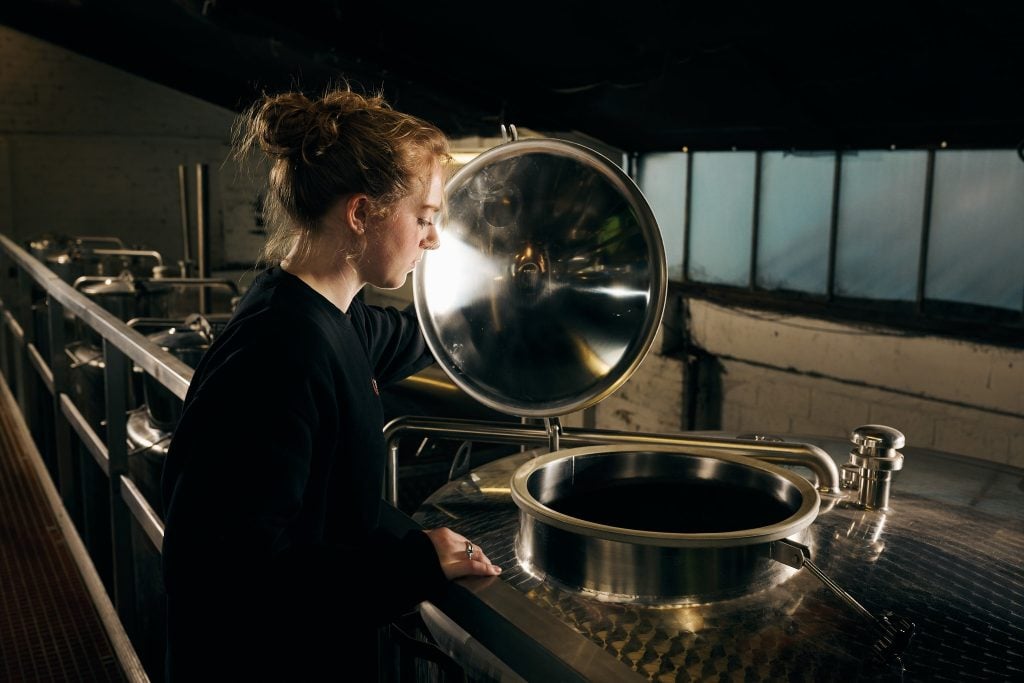
The industry is in a better place now, but we have more to do
The Last Drop: A history of women in whisky
Multiple reports place the percentage of women among whisky drinkers at approximately 35–40% in recent years. But, while progress has been made, complacency is the last thing we need now. It’s on all of us to make sure equality and respect aren’t seasonal gestures for International Women’s Day, but the standard measure of this industry.
Anyone who’s spent time on whisky forums, tasting rooms, or at whisky festivals knows the old ghosts haven’t gone. There’s still the casual misogyny of “the wife” jokes, intrusive behaviour, and assumptions about knowledge or preference. Outdated ideas still fester, like women should drink light or sweet whiskies. Guides on “How to drink whisky like a gentleman” do big numbers, which is pretty grim.
Women in whisky will tell you about the condescending comments, the unsolicited lectures, the quiet belittling. We have more work ahead of us. To move forward in any field, it is necessary to understand what happened in the past. Whisky has dark chapters, and it has bright lights that shone through when the odds were pitted against them.
From Bessie’s steel to Annabel Thomas’s carbon-neutral distillery. Red flags on Speyside to red wax in Kentucky. The history of women in whisky isn’t a footnote. Women were there when this spirit first flowed. They shaped its science, culture, and conversation along the way. They carried it forward, even when they were going against the grain.
*A good bit of reading for those interested in the subject is Girly Drinks: A World History of Women and Alcohol (2022).
**You can donate to the OurWhisky Foundation here or join the community here.
